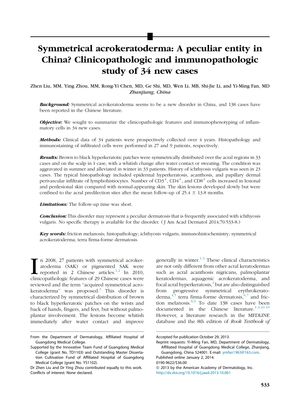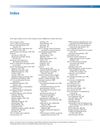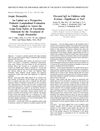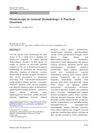Symmetrical Acrokeratoderma: A Peculiar Entity in China? Clinicopathologic and Immunopathologic Study of 34 New Cases
March 2014
in “
Journal of The American Academy of Dermatology
”

TLDR Symmetrical Acrokeratoderma (SAK) may be a unique skin condition in China, lacking specific treatment and needing long-term monitoring.
The study examined 34 new cases of Symmetrical Acrokeratoderma (SAK) in China, a condition presenting with brown to black hyperkeratotic patches on acral regions, often associated with ichthyosis vulgaris. Clinical data were collected over four years, and histopathology and immunostaining were performed on 27 and 9 patients, respectively. The condition was found to worsen in summer and improve in winter for most patients. Histopathological analysis showed epidermal hyperkeratosis, acanthosis, and lymphohistiocytic infiltrate, while immunophenotyping indicated increased CD3+, CD4+, and CD8+ cells in affected skin. The study concluded that SAK may be a unique dermatosis in China with no specific therapy available, and it requires long-term follow-up due to concerns about potential progression to other body areas. The average follow-up period was 25.4 ± 13.8 months.


